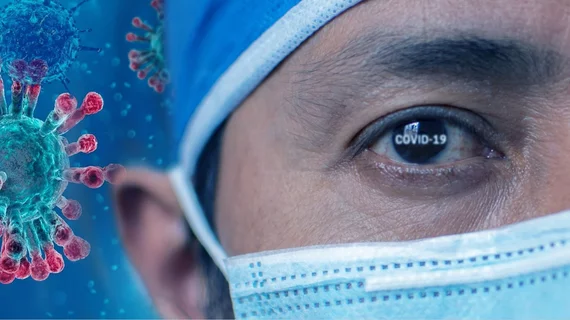When a patient with possible COVID-19 presents at the radiology department, it can trigger a number of urgent steps that include isolation, testing, strict cleaning protocols and the use of scarce personal protective equipment. Wanting to provide physicians with a clear process to report and launch these next steps, Harvard Medical School experts have devised an easy and “unambiguous” new reporting process for patients who possibly have the disease.
Others—such as the Dutch Radiological Society—have previously designed such reporting and data systems. But those do not specifically address radiology department workflows, including contact tracing and communication, experts wrote Thursday in JACR. They’ve now implemented a “locally designed” reporting system at Brigham and Women’s Hospital, with 71% of reports using the recommended terminology in the first two months.
“These protocols will likely become even more important in the future as mitigation measures decrease and the epidemic transitions to an endemic phase, with many sporadic unsuspected patients,” Mark Hammer, MD, with the Department of Radiology at the Harvard-affiliated institution, and colleagues wrote June 11.
Experts within radiology and hospital leadership, along with thoracic and infection control specialists, all collaborated to develop the new reporting system, based on an already implemented diagnostic-certainty scale. Brigham asks radiologists to use terms such as “consistent with” for a COVID diagnosis confirmed by lab testing, and “very unlikely” or “most likely,” without such proof. If a coronavirus diagnosis is unlikely, the hospital has urged rads not to use “COVID-19” in their reports.
Brigham’s guidelines also have detailed responses for clinicians and the operations team. For example, in patients not suspected of having the virus—but who present signs on imaging testing—radiologists are asked to alert hospital infection control experts. This ensures that the proper cleaning and contact tracing procedures take place, Hammer and colleagues wrote.
After implementation, the research team conducted a retrospective review to gauge the new guideline’s use. Out of more than 77,000 reports written in March and April, 1,083 suggested COVID-19 based on imaging findings. And 774 of those reports (71%) used the recommended terminology. Of the 574 patients without known COVID-19 at the time of imaging, 60% were eventually diagnosed with the disease (nearly all through CT).
“Our study has several limitations, principally that it is a single-center retrospective analysis. However, we have shown the successful rapid implementation of our local operational guidelines for handling suspected COVID-19 imaging findings,” the team concluded.
Read more about Brigham and Women’s work in the Journal of the American College of Radiology here.

